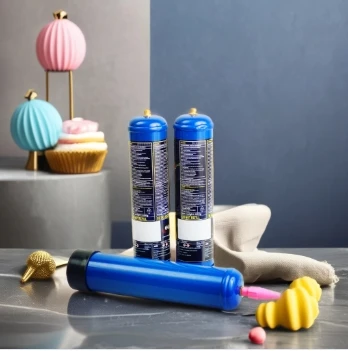
Are Nitrous Oxide Cream Chargers Safe for Culinary Use? Nitrous oxide (N2O) cream chargers have become a kitchen staple in both professional and home kitchens. But the question remains: is nitrous oxide safe in whipped cream and what should you know about N2O safety when using a whipped cream dispenser? Let’s get into it and break down the facts so you can use it safely and enjoy. What is Nitrous Oxide in Culinary Use Nitrous oxide is a colorless, odorless gas that is the propellant in cream chargers. When used in a safe whipped cream dispenser , the gas is released into the cream and creates a reaction that forms a light and fluffy texture. This reaction is what gives whipped cream its volume and stability. N2O is also used in medicine but the nitrous oxide in cream chargers is food grade and manufactured specifically for food use and meets food standards. N2O in Whipped Cream When used properly, nitrous oxide is safe for culinary use. The gas dissolves into the cream and adds volume without affecting the taste or safety of the end product. The process is controlled and reputable N2O charger manufacturers ensure the gas is pure. Are Whipped Cream Dispensers Safe? Yes, whipped cream dispensers are safe when used as instructed. They are designed to withstand the pressure of the nitrous oxide release as long as you use compatible chargers. Using high quality equipment from trusted suppliers is key so your dispenser works safely and efficiently. How to Use Safely To ensure N2O safety follow these guidelines: Use Quality Chargers and Dispensers: Only use chargers and dispensers that meet industry standards. Best Whip products are tested to meet safety specs. Read the Manual: Read your dispenser’s manual to understand how to use and maintain it properly. Proper handling reduces risk. Store Correctly: Store your chargers in a cool dry place. High temperatures can damage the chargers and cause them to malfunction. Recycle: Empty chargers should be recycled according to local regulations to be environmentally safe. Frequently Asked Questions and Myths Some people worry that using nitrous oxide in food is bad for you. In food use, the gas is only used to aerate the cream and doesn’t stay in the final product in significant amounts. So the whipped cream is safe to eat. Reputable brands have strict quality control so the N2O in food is contaminant free. N2O Chargers Safe Use In short, nitrous oxide cream chargers are safe for use when used properly. They’re convenient and consistent so a great tool for chefs and home cooks. Make sure you use a safe whipped cream dispenser and follow the guidelines and you’ll have peace of mind and perfectly whipped cream.
